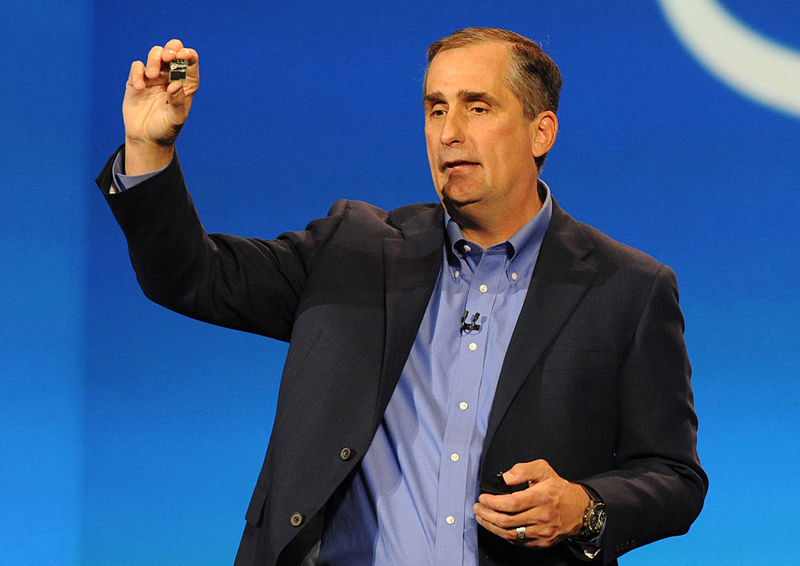Intel CEO Brian Krzanich says Moore's Law is alive and well

It was a week ago today that Intel announced plans to eliminate up to 12,000 positions globally, or 11 percent of its total workforce, as part of a transformation strategy. Intel CEO Brian Krzanich shared more details about those plans today, which includes continuing to abide by Moore's Law. Well, sort of.
As revised in 1975, Moore's Law dictates that the number of transistors in a processor will double around every two years. It's named after Gordon Moore, a co-founder of Intel who originally predicted in 1965 that the number of transistors would double annually. Moore's Law (the revised version) has driven innovation in the semiconductor industry and at Intel in particular for the past 50 years, though every so often, there's chatter that it's no longer feasible.

That's been the popular opinion in recent times as Intel struggles to transition its manufacturing process from 14 nanometers to 10 nanometers. Just last month, Intel seemingly signaled the end of its tick-tock release cadence, which was getting ready to be disrupted with Kaby Lake, a second consecutive tock release (the first being Skylake) to buy some time for Intel to work on Cannonlake. It was originally thought the disruption would be a one-time anomaly, but in a recent 10K filing, Intel hinted that the tick-tock era might over. That in turn prompted talk of Moore's Law coming to an end, though don't tell that to Krzanich.
"In my 34 years in the semiconductor industry, I have witnessed the advertised death of Moore’s Law no less than four times. As we progress from 14 nanometer technology to 10 nanometer and plan for 7 nanometer and 5 nanometer and even beyond, our plans are proof that Moore’s Law is alive and well," Krzanich stated in a blog post outlining Intel's plans. "Intel’s industry leadership of Moore’s Law remains intact, and you will see continued investment in capacity and R&D to ensure so."
That's good news for enthusiasts, gamers, overclockers, and every other segment that drives continued advancements in processing power, though Krzanich muddies the water a bit when he talks about Moore's Law in terms of economics instead of the current pace of doubling transistors.
"Moore’s Law is fundamentally a law of economics, and Intel will confidently continue to harness its value. The law says that we can shrink transistor dimensions by roughly 50 percent at a roughly fixed cost, thus driving twice the transistors for the same cost (or the same number of transistors for half the cost)," Krzanich says.
What's missing from all that rhetoric is a commitment to (or even an acknowledgement of) sticking with a two-year time frame for doubling transistors. Certainly Intel has 7 nanometer and 5 nanometer plans on its roadmap, but with Cannonlake (10 nanometer) delayed until next year, you have to wonder how smoothly things will go after that.
Keep up to date with the most important stories and the best deals, as picked by the PC Gamer team.
In any event, it's nice to see Krzanich not only talk about Moore's Law, but list it as one of five core beliefs behind its transformation strategy.
Paul has been playing PC games and raking his knuckles on computer hardware since the Commodore 64. He does not have any tattoos, but thinks it would be cool to get one that reads LOAD"*",8,1. In his off time, he rides motorcycles and wrestles alligators (only one of those is true).


